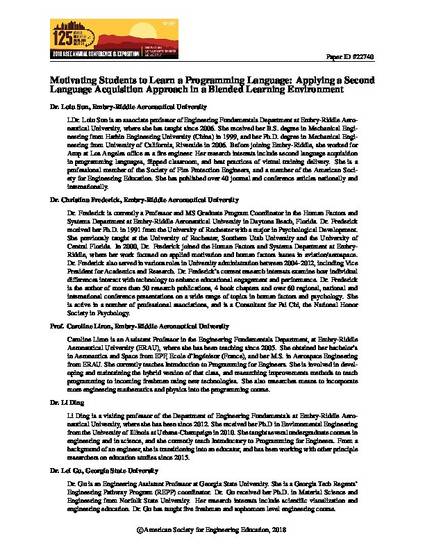
Article
Motivating Students to Learn a Programming Language: Applying a Second Language Acquisition Approach in a Blended Learning Environment
Proceedings of the ASEE Annual Conference and Exposition
Submitting Campus
Daytona Beach
Department
Human Factors and Behavioral Neurobiology
Document Type
Article
Publication/Presentation Date
6-1-2018
Disciplines
Abstract/Description
Learning a programming language typically involves acquisition of new vocabulary, punctuation, and grammatical structures to communicate with a computer. In other words, learning a programming language is like learning a human language. A recent study showed that programmers use language regions of the brain when understanding source code and found little activation in other regions of the brain devoted to mathematical thinking. Even though programming code involved mathematical operations, conditionals, and loop iterations, researchers found that programming had less in common with mathematics and more in common with human language.
Publisher
American Society for Engineering Education
Citation Information
Lulu Sun, Christina Frederick, Caroline Liron, Li Ding, et al.. "Motivating Students to Learn a Programming Language: Applying a Second Language Acquisition Approach in a Blended Learning Environment" Proceedings of the ASEE Annual Conference and Exposition (2018) p. 1 - 10 Available at: http://works.bepress.com/christina_m_frederick/35/
